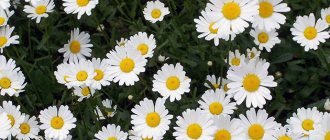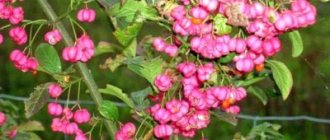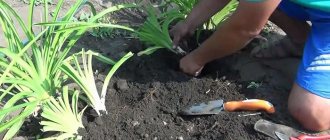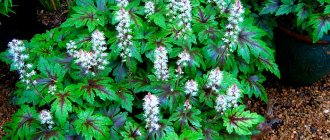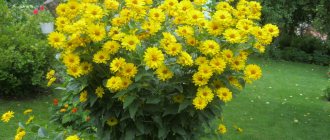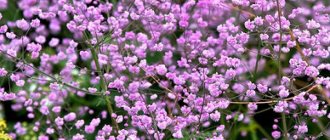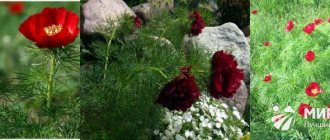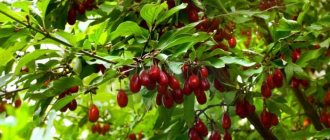Clematis stinging or clematis is a perennial plant of the Ranunculaceae family, which is a powerful and strong vine with lush greenery and many small white flowers. Quite easy to care for and at the same time highly decorative, clematis stinging is loved by many landscape designers and gardeners around the world.
Description of clematis pungent
In the natural environment, on the coast of the Black and Mediterranean Seas, clematis stinging can reach 3-5 m in height with a diameter of 3-4 m. Clematis prefers forest plantings or bushes. In park compositions and private gardens its dimensions are more modest - up to 1.5 m in height.
Comment! The word "clematis" translated from Greek means "liana branch" or "vine shoot."
Clematis flammula, also called clematis, is a woody climbing vine. The plant has a fast growth rate, flowers are formed only on the shoots of the current year. Small-flowered white clematis in the photo is very similar to other wild species, such as mountain clematis (Clematis montana) or yellow clematis (Clematis vitalba).
The shoots of clematis pungent quickly grow green mass. Many small lanceolate or broadly oval leaves 1.5-4 cm long. The color of the leaf blade varies from emerald to dark green, the surface is smooth, with an almost imperceptible waxy coating.
With the beginning of flowering, which lasts from June to August, the clematis stinging bush is transformed: the vine resembles a light white cloud of hundreds of small star flowers. The diameter of clematis flowers does not exceed 2-3 cm, the sepals are obtuse with pubescence along the very edge, length is 4-10 mm. Flowers are collected in voluminous airy panicles. One clematis shoot has from 200 to 400 buds. The flowering of clematis pungent is accompanied by a pleasant, unobtrusive aroma with notes of honey and almonds. At this time, the plant attracts many honey insects.
After flowering, on Clematis stinging you can see red-brown pubescent or bare achenes with a fancy tufted nose - up to 7 cm long. Clematis does not lose this interesting decorative appearance until the end of September.
This type of clematis is called stinging due to a special caustic substance produced by its powerful cord-shaped rhizome. If it comes into contact with the skin or mucous membranes of the mouth and nasal cavity, it causes irritation, which may be accompanied by swelling. The juice of clematis pungent is not poisonous; if precautions are taken when replanting the plant, it does not pose a danger to human health.
Appearance and characteristics of the plant
Stinging clematis is a small-flowered shrub, the vines of which are capable of entwining an area 5 m high and 4 m wide. It is noteworthy that the shoots themselves, as they grow, entwine nearby structures. As a result, nondescript walls or a fence turn into an elegant green carpet with beautiful buds.
The leaves of this species are small, dark green, oval in shape. Each vine produces up to 400 buds. When fully expanded, they look like stars. The buds themselves are small, even when opened their diameter is no more than 3 cm. Such an unusual plant with small white flowers looks great both when planted alone and as a background for other plants.
Bush clematis also looks attractive when decorating gazebos. It can be combined with other varieties that have contrasting flower colors and the same flowering period.
Origin and properties of the flower
In the wild, stinging clematis is found in forest edges, hillsides and undergrowth. The length of its shoots reaches 5 m. Under natural conditions, the plant can be found in Transcaucasia, Asia, Africa and the Mediterranean part of Europe.
During flowering, clematis produces a pleasant honey-vanilla aroma. Liana is a honey plant. After flowering, it is covered with large reddish-brown seeds, giving the bush a decorative appearance until autumn. In warm climates, stinging clematis only partially sheds its leaves at the end of the growing season . In harsh conditions, the entire above-ground part dies off in the fall, and with the onset of warmth, growth begins from the tillering point. Thanks to this feature, burning clematis easily tolerates even severe winter frosts.
Advantages and disadvantages of use in landscape design
Burning clematis is widely used in landscape design. Most often it is used as a cover plant for various supports. A straight white cascade can cover an unattractive wall or fence, and also become a decoration for a gazebo. You can plant the vine near trees so that it entwines their trunk. It is important to remember that the lashes will have to be tied up first, since they are not capable of wrapping around the support on their own.
By shaping the bush and directing the vines, landscape designers sometimes work wonders. Burning clematis becomes like a white cloud, enveloping windows, arches and entrances. The ideal complement for it are climbing roses, honeysuckle or wild grapes.
The advantages of the vine are its unpretentiousness, suitability for molding and high decorative qualities. Disadvantages include a short flowering period and the need to remove dead vines at the end of the growing season when grown in a northern climate or in the middle zone.
Clematis pungent in landscape design
Snow-white burning clematis is an excellent option for creating natural landscapes in a wild style. It is used for decoration:
- walls;
- gazebos;
- screen;
- pergola;
- fence;
- balconies;
- bare tree trunks.
If you place a support near the clematis, the plant will quickly entwine it, forming lush white-green thickets. Small-flowered clematis is often planted as a full-fledged bush or a creeping flower carpet. Clematis stinging is used as a ground cover plant when decorating garden paths, flower beds, and coniferous compositions. Interesting combinations of clematis with crops such as:
- spirea;
- juniper;
- low-growing varieties of thuja;
- lilac;
- mock orange;
- rose hip;
- forsythia.
Comment! A classic combination in landscape architecture is considered to be mixed plantings of clematis and climbing roses.
Oriental clematis and other similar species, contrasting in color, are often placed next to the burning one. The dense, small foliage of clematis in combination with countless small flowers creates a romantic atmosphere in the garden and makes the area cozy and well-groomed. The following are also suitable for joint vertical gardening:
- girl's grapes;
- hop;
- ivy;
- actinidia;
- decorative beans;
- sweet pea;
- nasturtium;
- kobeya.
Landscape designers often combine clematis with perennial and annual herbaceous plants. Good neighbors for clematis will be:
- peonies;
- phlox;
- marigold;
- daylilies;
- irises;
- calendula.
Content:
Small-flowered clematis is not popular with us, and it’s completely in vain. Plants from this group grow quickly, bloom profusely and are winter-hardy. Another important advantage is that almost all species bloom on the current year’s shoots, and this greatly simplifies pruning.
As you already know, all varieties of clematis are divided into groups. Clematis (another name for clematis) with very similar characteristics - growth, flowering, size of the vine and flower, color, reproduction, etc. are combined into one group.
If you know which group your clematis belongs to, growing it will not be a problem.
We have selected only those groups that are popular with breeders and that are easy to grow.
- Armandi Group,
- Atragene Group,
- Heracleifolia group,
- Integrifolia Group,
- Tangutica Group,
- Texensis group,
- Viticella group.
In the international classification, two groups - Viticella and Integrifolia - are classified as large-flowered clematis. Probably because in these groups the size of the flowers varies widely - from 2 cm to 12 cm.
We still classified them, as is customary in Russian academic circles, as large-flowered and you can find their description in the article about them.
Planting and caring for clematis stinging
By following the simple rules of agricultural technology, you can easily grow white small-flowered clematis in your summer cottage. An optimally selected location, proper planting and subsequent care will ensure abundant flowering and decorative appearance of clematis pruriens for many years to come.
Selection and preparation of a landing site
Clematis stinging can grow in one place for up to 25 years. It can be placed next to outbuildings, near a gazebo or veranda, or as an arch or fence. It is important that the place is calm and well lit, but not located in the direct sun. Clematis can be planted in partial shade - this is ideal for hot climates. Gusts of wind are destructive for clematis, as they easily break young shoots. Decorativeness suffers from this, and the plant looks dejected.
Like other types of clematis, burning clematis loves loose, light soil rich in nutrients. The pH reaction should be neutral or slightly alkaline. In acidic soil, lime should be added before planting clematis.
Comment! Small-flowered clematis grows best on loam and sandy loam.
Clematis stinging does not tolerate close groundwater; it is not recommended to plant it in lowlands and wetlands. Excess moisture will inevitably lead to rotting of the root system. Some gardeners get out of the situation by digging special drainage ditches in the immediate vicinity of clematis plantings. During prolonged rains, wood ash is scattered under the bush.
The hole for the clematis is dug in advance. Garden soil is mixed with the following ingredients (per 1 m²):
- wood ash – 300 g;
- superphosphate – 150 g;
- peat – 10 l;
- humus - 20 l.
The dimensions of the recess depend on the dimensions of the clematis root system, but not less than 60 cm in width and length, depth - 70 cm. Immediately before planting, the soil can be shed with a weak solution of potassium permanganate.
Seedling preparation
Properly selected planting material is the key to healthy and abundant flowering of clematis. When inspecting seedlings in a nursery, you need to pay attention to the following nuances:
- the plant should not have mechanical damage;
- pests and signs of any diseases must be absent;
- the root system must have at least 5 roots;
- An autumn clematis seedling must have 2 shoots, and a spring one must have at least one.
The best time to buy young clematis is considered to be mid-September. 2-year-old seedlings with a closed root system have the highest survival rate. Before planting, the shoots of clematis pungent are cut off, leaving 1-5 buds.
Rules for planting clematis pungent
Clematis stinging is planted in open ground in spring or early autumn. In areas with a cool temperate climate, spring planting is more appropriate; in the south, on the contrary, autumn planting is more appropriate. Planting clematis pungent is not difficult, however, you need to follow several rules:
- A support is installed at the bottom of a hole dug in advance and covered with a layer of drainage made of pebbles, broken bricks, crushed stone, expanded clay or coarse river sand.
- A layer of fertile soil is placed on the drainage in the form of a mound, on which the seedling is placed, spreading the roots.
- Young clematis is covered with earth so that the root collar is 10 cm below ground level, and something like a funnel or crater is formed around it.
- The clematis seedling is watered generously with warm, settled water and mulched with a generous layer of peat.
- In the first weeks after planting, clematis is shaded from direct sunlight.
Important! The distance between neighboring clematis bushes should be at least 1 m.
Watering and fertilizing
Clematis pungent small-flowered loves moisture; the vine needs to be watered once a week, and on hot, dry days - 2-3 times. To do this, it is better to use a watering can without a diffuser; pour water at the root, trying not to get on the leaves and stems. Inaccurate irrigation of the above-ground parts of Clematis pruriens can lead to its wilting. Young clematis bushes consume much more moisture than adult perennial vines.
In order for clematis stinging to please the gardener with lush and succulent foliage, as well as abundant and long-lasting flowering, it must be fed in a timely manner. During the active growing season, organic and mineral fertilizers are applied alternately to the soil around the clematis, maintaining an interval of 20-25 days.
Nitrogen and its compounds, so necessary for active growth, are contained in organic matter (manure, chicken droppings). They are mixed with water and infused - this promotes better absorption of nutrients by the roots of the plant. In the absence of droppings or manure, clematis stinging can be fed with urea (urea).
To ensure high-quality bud formation and lush, long flowering, clematis pungent is fertilized with a complex mineral product, for example, nitrophoska.
When clematis stinging begins to bloom, they try not to feed it, especially with products containing a large amount of nitrogen. This will provoke the vine to increase green mass to the detriment of flowering. When the burning clematis fades, potassium-phosphorus fertilizers are applied to the root zone. It is better to feed the vine immediately after the next watering.
Advice! In order to prevent diseases and to increase immunity, foliar feeding of clematis is carried out with a solution of boric acid and potassium permanganate. Take 2-3 g of potassium permanganate and 1-2 g of boric acid per 10 liters of water.
Mulching and loosening
To increase the air permeability of the soil, the circle around the trunk is periodically loosened, while removing weeds. The procedure should be carried out after watering or rain. To reduce the evaporation of moisture from the soil surface, stinging clematis is mulched with sawdust, humus, peat or fallen leaves. The mulch layer is replaced with a new one several times during the season.
Garter
Young fast-growing shoots of clematis pungent are characterized by increased fragility and require timely tying to support. To do this, use raffia, twine or plastic clips. The lower part of the clematis bush is fixed to a mesh or wooden structure using wire. The vines are tied in one layer so that light and air easily penetrate to any part of the plant. Otherwise, clematis stinging will suffer from various diseases caused by lack of light and high humidity.
Trimming
In the spring, for more spectacular and long-lasting flowering, several side shoots are cut off from clematis. Dried or damaged branches are removed throughout the warm season. To do this, use a well-sharpened garden pruner, disinfected in a solution of potassium permanganate or alcohol. In the fall, all clematis shoots are radically pruned, leaving only a few nodes above the ground.
Preparing for winter
After autumn pruning, the tree trunk circle is covered with mulch or dry soil, a wooden box is placed on top, and covered with a thick layer of sawdust, peat or leaf litter. A thick plastic film with holes made in it for ventilation is fixed on the shelter. In this form, the rhizome of clematis pungent will calmly endure even the harshest and snowless winter.
Necessary conditions for growth and flowering
Burning clematis is not a capricious crop that requires increased attention. But in order for its decorative qualities to reach the maximum level, certain requirements must be met:
- planting work should be done in March or September;
- for planting, choose a place completely protected from wind and drafts;
- The size of the planting hole should be 60 x 60 cm.
The plant needs good lighting, but excess sunlight also negatively affects its condition. The liana does not tolerate overheating of the soil, so it is recommended to plant the soil around it with dense or ground-covering annuals.
See also
Description and characteristics of clematis Taiga, pruning group, planting and care
Read
Reproduction
Clematis stinging can be propagated both vegetatively and generatively. Each method has its own advantages and disadvantages:
- Seeds. Small-flowered white stinging clematis is a natural species, so seedlings grown from seeds will exactly repeat all the characteristics of the mother plant. Future seed material is collected from clematis at the end of October. The seeds are cleaned of fluff and tufts, placed in containers with damp coarse sand and placed in the refrigerator for 2-3 months for stratification. In April-May, clematis seeds are sown in a sand-peat mixture on the soil surface, sprinkled with a thin layer of sand on top. Caring for seedlings comes down to regular watering. When 2-3 true leaves have formed on young clematis, they can be picked into separate containers. The bushes will be ready for transplanting to a permanent place in the garden only next spring.
- Layerings. In the spring, a shallow groove is dug near the clematis bush, into which a strong, healthy vine is placed and secured with special metal brackets. After new shoots appear on the layering, it is lightly sprinkled with earth. A year later, the allocated shoot is carefully removed from the ground and cut into individual seedlings, which are immediately assigned to a permanent place.
- Cuttings. Both green and lignified shoots of clematis are suitable for cuttings. They are cut 8-10 cm long so that the upper cut above the node is straight, and the lower one is at an angle of 45°. The leaves below the node are torn off, the tips of the cuttings are treated with a growth stimulant (Kornevin or Heteroauxin preparations) and planted in a greenhouse in a loose nutrient substrate. After 1.5-2 months, the root system of young vines will be ready for transplanting to a permanent place or to growing beds.
- Dividing the bush. Adult burning clematis is dug in from all sides or removed from the ground completely. The bush is divided into several parts so that each has a good rhizome and several shoots with vegetative buds. Clematis cuttings are immediately planted in a permanent place.
Armandii Group ↑
These are large climbing vines up to 6 m in height. The flowers are not very large, up to 6 cm, but the whole plant is abundantly strewn with them. Plus they smell very good. The colors are mostly white or light. Flowering occurs in May-June.
Numerous tendrils allow the plant to climb everywhere - along trellises, old walls, trees. Given its height, you can plant it near high fences or walls of the house.
Diseases and pests
Clematis stinging most often suffers from fungal infections. Clematis pests are:
- aphid;
- mole cricket;
- slugs;
- snails;
- root-knot nematode;
- caterpillars;
- spider mite;
- rodents.
The table below describes the most common diseases and pests of clematis pungent, as well as control and prevention measures.
| Disease or pest | Description | Control and prevention measures |
| Rust | Rust on clematis stinging appears in the form of red spots on young shoots, petioles and leaves. If left untreated, shoots become deformed, leaves turn brown and curl, which subsequently dry out and fall off. | For prevention purposes, weeds should be weeded in a timely manner and affected fragments of the vine should be trimmed. When clematis stinging is infected with rust, use a 1% solution of Bordeaux mixture, copper oxychloride (CHOM), preparations “Topaz”, “Gamair” |
| Gray rot | In cloudy and rainy summers, the leaves and petals of clematis pungent may become covered with brownish spots with gray fluff. These are the first signs of gray mold infection. Over time, the young shoots and leaves die off, and the clematis stops growing. Spores of the fungus Botrytis cinerea are easily carried by the wind and quickly infect other garden crops. | The soil around the clematis should not be allowed to become waterlogged. For control, clematis pungent bushes are treated with the preparations “Azotsen”, “Gamair”, “Fundazol” |
| Powdery mildew | At the height of summer, clematis stinging can be affected by powdery mildew. Leaf blades, green shoots, flowers and buds are covered with a gray-white coating reminiscent of flour. Affected fragments quickly change color to brown and die | Preventive measures against powdery mildew - timely watering without waterlogging, treating clematis plantings with cow's milk diluted in water. For treatment, use “Fitosporin-M”, “Topaz”, “Baktofit”, “Alirin-B”, soda ash diluted in water (40 g per 10 l) |
| Verticillium wilt (wilt) | The first sign of wilt on clematis stinging is wilting of the tops of the shoots, especially young ones. This is the result of the activity of pathogenic fungi that live in the soil and, under favorable conditions, penetrate the stems of the plant. The vessels in the core of the stem are damaged and clogged with fungal mycelium, and nutrients are supplied in insufficient quantities. The disease spreads very quickly - several lashes can dry out in a day | Do not plant clematis stinging in a shaded place with heavy and acidic soil. It is important to tie up clematis in a timely manner, remove weeds and not overfeed with nitrogen. The peak activity of the fungus occurs at a temperature of 23-26°C and high humidity levels. Clematis stinging bushes are treated with a 1% solution of copper sulfate, Trichodermin, Glyokladin, and a copper-soap solution. In some cases, it is not possible to save the clematis; it is dug up and burned |
| Aphid | At the beginning of summer, aphids become active on the tops of young shoots of clematis pungent. Numerous small insects literally stick around the clematis, sucking out the plant sap and secreting a sticky liquid. Gradually the shoots dry out and die | Aphids are removed from clematis stinging mechanically (by washing off with a stream of water), beneficial insects and birds are attracted to the garden, and traditional methods are used (spraying infusions of tomato tops, garlic, onion peels). The most effective use of modern bioinsecticides, such as Fitoverm-M |
| Snails and slugs | With the arrival of the warm season, clematis stinging is attacked by slugs and snails. They eat the soft tissues of the clematis, in particular the kidneys | Pests are collected by hand; wood ash, lime, superphosphate, and granulated metaldehyde are used to repel and control them. |
| Spider mite | You can notice that clematis stinging is affected by spider mites by the presence of sticky thick cobwebs on the leaves and shoots. Ticks pierce the clematis leaf plate from the underside and feed on the sap of the plant. Small yellow spots appear in these places; over time, the affected fragments lose color and dry out | Ticks become active during hot and dry weather, usually in mid-summer. It is difficult to get rid of the pest; you will have to treat the ground part of the stinging clematis three times with strong insecticides, such as Actellik, Akarin, Antiklesch |
| Root nematode | Nematode roundworms infect the clematis root system, causing the formation of thickenings that disrupt the normal nutrition of clematis. Liana looks depressed, pale, and growth is slowing down. Young seedlings of clematis pungent may die | Pests are repelled by planting marigolds and calendula. As well as mulching the clematis tree trunk with mint or wormwood. It is necessary to add compounds containing ammonia (ammonium nitrate or ammonium sulfate) |
Small-flowered clematis - maintenance-free garden decoration
Small-flowered clematis should not be ignored when arranging your site. This is a garden decoration that you don’t have to take care of at all. Among the small-flowered clematis, there are tall ones that will cover outbuildings and slender ones that will look like a beautiful bush strewn with flowers.
And what’s most remarkable is that these clematis can be easily propagated by seeds and they grow and bloom quite quickly.
I take the description of clematis varieties from the website of the Royal Horticultural Society of Great Britain.
Further. I give characteristics for those varieties that grow in my area.
Clematis violet (clematis viticella)
Purple flowers, from light to dark colors with pale green stamens.
height up to 4-5 m. Flowering July, August, September.
Cute, delicate and delicate clematis. Light purple small flowers. There are many flowers, the whole bush is strewn with them.
Slowly growing. To a height of 4-5 meters, as stated in the official description, it takes 30 years to grow. Not aggressive.
It is noteworthy that it reproduces well by seeds. In moist soil they sprout quickly.
In the fall, you don’t need to trim it or cover it; it grows well without care. If it freezes in a particularly cold winter, it will quickly recover.
Clematis recta
White small flowers with a pleasant scent. The shoots are raised and do not cling to supports, but can rest on them. If you do not tie it up, the shoots will spread along the ground. Needs heavy pruning.
Flowering from June to August.
Bush height 1 – 1.2 m.
I have this slender, not tall bush. Due to the many small bright white flowers, it looks very elegant. Flowering begins in early June and lasts about a month.
Against a white background of small flowers, flowers of another variety of clematis growing nearby and having a medium-sized flower look beautiful.
When it grows, the shoots are straight and stand on their own, but if it is not tied up, our winds cause them to fall and break, they are hollow inside.
In good soil and in a wet year it can grow up to 2.5 meters tall.
In the fall I cut it off completely and cover it with leaves.
Clematis vitalba
A mass of small creamy-white flowers, greenish when opening, up to 2.5 cm in diameter. White anthers.
Flowering July, August, September.
Height 7 meters or more.
This clematis begins to bloom at the end of July and blooms until the end of August. The flowers have a delicate pleasant scent.
Even here it grows huge. There is no need to cover or trim it. Recovers quickly after harsh winters. It decorates outbuildings well and provides a lot of shade. Good for pruning.
It reproduces well by seeds, sometimes even without outside intervention.
Successful clematis for gazebos.
Clematis Summer Snow ("Paul Farges" Summer Snow)
Removed by A.N. Volosenko-Valenis and M.A. Beskaravainaya 1964
Many white flowers 4-5 cm in diameter with an intense sweet scent in a sunny position.
Flowering July, August, September.
This is a varietal form of the Vitalba group. In our country it blooms in August – September.
Do not prune for the winter, only if it freezes.
It differs from clematis vitifolia in that it has larger flowers and often has 6 rather than 4 petals.
This varietal form also retains its delicate jasmine scent.
Summer Snow is propagated by cuttings.
Tangut clematis (clematis tangutica)
Small yellow flowers - lanterns. Flowering July, August, September, October.
Height 4 – 5 m. 3rd trimming group.
A nice small-flowered clematis for lovers of the unusual; it is yellow in color, bell-shaped, opening towards the bottom.
I wouldn’t say that it is densely covered with flowers, but a lot depends on the location, it needs a lot of sun. Flowering is long, from July to the end of September with a short break.
Although its origin is China and India, surprisingly, it does not winter badly, but after autumn pruning I still cover it with leaves.
It reproduces well by seeds; they do not even need stratification.
Reviews from gardeners
Irina, 61 years old, Moscow region
The year before last, I couldn’t resist: I ordered a “burning” one by mail. In the first summer it did not bloom, only grew several stems about a meter long. But in the second year I already had a small blooming “cloud” with an absolutely incredible aroma.
Source: ogorodum.ru
Victor, 55 years old, Kursk
Clematis stinging has been growing on our site for more than 15 years (inherited from the previous owners of the dacha). The blank western wall of the house is completely covered in summer, as if a white blanket is hanging.
Source: ogorodum.ru
Problems you may encounter when growing clematis
| Problem | Cause | How to get rid of the troubles that have arisen? |
| Stunted growth | In the second year after planting, in June, the growth of clematis reaches 20 centimeters and stops. This means that the care regimen has been disrupted. | To help the plant begin to grow, it is necessary to increase the number of waterings and double or triple fertilizing with nitrogen-containing fertilizers, such as urea. |
| Drying of the tops | If the tops of the vine begin to curl and dry out, this means that the plant is not getting enough water or there are aphids on it. | When clematis is damaged by insects, it is sprayed three times with a decoction of tobacco dust or hot pepper, maintaining an interval of 3-4 days. If traditional methods do not help, you can use chemicals. |
| Grinding Bloom | If clematis stinging flowers stop forming lush clouds, then most likely this means that the suction roots located at depth do not receive enough moisture. | In this case, a shallow trench is dug around the plant and water is poured there when watering. This trench can also be used for applying fertilizers. |
Clematis stinging is a very beautiful plant with which you can decorate any garden area. It will add tenderness and airiness to any composition. A pleasant bonus for any gardener will be ease of care and good frost resistance.
Possible problems
In the process of growing stinging clematis, the gardener may encounter some problems. In particular, the vine sometimes stops blooming, its inflorescences become smaller from year to year, or the tops begin to dry out. It is important to correctly determine the cause of such trouble and take measures to eliminate it.
The plant has stopped growing
This problem most often appears in the first year of life, when the seedling really stops growing and its height does not exceed 0.2-0.3 m. The reason for this is improper care. The liana will require increased fertilizing containing nitrogen and good watering.
Inflorescences become smaller
This problem is typical for old bushes aged 5 years or more. The root system goes too deep into the ground, and watering does not provide it with the necessary amount of moisture. As a result, the root weakens. It is necessary to dig several plastic bottles, neck down, into the ground at a distance of 0.5 m from the main trunk of the bush. The bottom is cut off and water is poured into the container. This manipulation promotes deeper penetration of the liquid into the ground.
Pruning rules
Throughout the season, plants are constantly cleaned of dried and broken shoots. But their autumn pruning is especially important.
- Clematis blooms mainly on new shoots, so in the fall you need to cut off its entire above-ground part with a long and thin knife, leaving only a couple of nodes. This pruning of clematis makes it easier to care for in winter.
- After this, the plants are hilled to a height of 10–15 cm with mulch or dry soil.
- Then they are covered with a box or a layer of peat, sawdust or dry leaves.
- They complete the winter protection of plants by covering them with film on top. In this case, it is necessary to leave holes on the side for ventilation.
Watering and fertilizing
Clematis stinging needs good watering during the growth period. In dry weather, water not often, but abundantly. Clematis requires four times (per season) fertilizing with mineral fertilizers, which is done after watering. To protect the root system from overheating, it is advisable to plant the bushes with annuals.
Clematis stinging begins to bloom profusely in the sixth year. Until this moment, only a few flowers appear, which should be picked off. From the age of three, shoots grow at the bush.
Sheltering clematis for the winter
In clematis, the root system and the lower (aerial) part are especially sensitive to low temperatures (buds are left on it when completely pruned). Therefore, even before the onset of frost, it is necessary to cover it to a height of up to 15 cm. Typically, experienced gardeners do not use soil or fertilizer alone. It is advisable to make such a shelter using a mixture of soil + organic matter. The latter is taken from humus, peat, dry manure or compost.
There are different ways to cover clematis for the winter. You just need to try to ensure that the shelter protects not only from cold, but also from dampness and is not excessive. Clematis is a completely frost-resistant plant and there is no need to insulate it beyond measure.
The shelter should be made based on the group of colors:
Groups I-II (last year's shoots). These shoots need to be preserved, so they are carefully rolled into an arc and pinned to the ground. Cover the top with spruce paws and dry leaves. Roofing felt or film is laid as the topmost layer. The edges are pressed tightly.
Group III (young shoots). These short-cut shoots are the easiest to cover. First, like the rest of the groups, they are sprinkled, and a wooden box is placed on top. Material is thrown onto the box.
Clematis is a climbing plant capable of producing vines of great length, rising to great heights. Therefore, it is very important to provide it with the necessary structures for support - garden structures or natural supports (trees, shrubs). The growth of clematis is intense, and its numerous flowers delight for a long time. You can use it as a spectacular coating that will protect from unwanted glances. To get the best effect and create wonderful compositions, it is better to plant several varieties at once, blooming in turn, combining them yourself. Preparing clematis for winter is not difficult, but you need to know exactly the characteristics of the variety, and carry out all the necessary operations on time and carefully. Most varieties tolerate winter well, but sheltering the vine from frost is necessary.
+1
Propagate by seeds and layering
| general characteristics | Densely leafy, highly decorative deciduous vine |
| Size | Height up to 5m, width up to 4m |
| Flowers | White 2-3 cm. Appears in June-July |
| Leaves | Emerald or dark green |
| The soil | Loams, sandy loams |
| Illumination | Sun, partial shade |
| Winter hardiness | Can be grown even in northern latitudes |
| proklumbu.com ” src=”https://qlumba.com/wp-content/uploads/2019/06/fmg5d01e4d28e7ae3.jpg” alt=”table_pic_” w /> | 1. Seeds |
Process:
- collect ripened seeds in the second half of October;
- clean them of tufts;
- carry out stratification at temperatures up to – 5 degrees;
- sow seeds in open ground in spring;
- water as needed;
- shoots will appear in a few weeks.
When propagated by seed, all varietal characteristics are preserved, clematis bloom 3–4 years after planting
How to plant clematis (video)
Clematis pungent is one of the most common and popular types of clematis in domestic gardening. It attracts with good frost resistance, unpretentiousness and durability, long flowering. The use of this plant in garden decoration is extremely diverse; its flowers are beautiful and fragrant.
